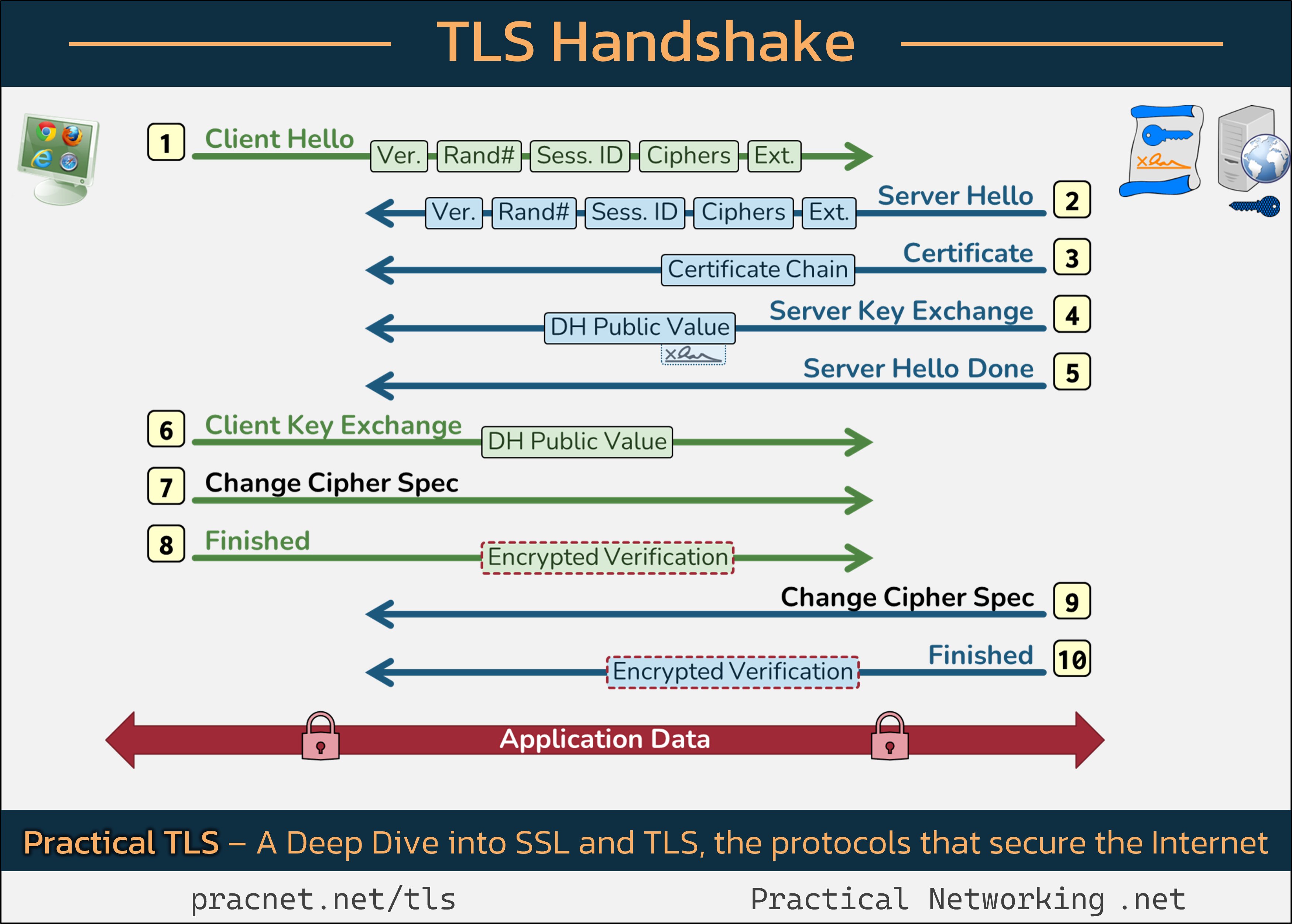Understanding the TLS Handshake: Behind the Scenes of Secure Connections
In this article, we’ll explore the intricate process that takes place when you connect to a secure website, commonly indicated by that reassuring padlock icon in your browser. 🔒 Understanding the TLS (Transport Layer Security) handshake is essential to appreciate how secure your data really is when browsing online.
To aid in our discussion, I recommend opening this infographic that illustrates the entire handshake process visually:
Decoding the handshake steps while referencing the infographic can enhance your understanding of the communication between your device and the server.
Introduction
As we delve into the handshake sequence, remember that the fundamental objectives of SSL/TLS are twofold:
- ✅ Verify the server’s authenticity
- ✅ Generate session keys for secure data transfer
Before we get into the details of the handshake, let’s clarify two essential concepts:
Records vs. Packets
It’s crucial to note that each line in the infographic represents a “record” involved in the handshake process, which differs from a packet. A single packet can contain multiple records, while multiple packets might be necessary to carry a single record.
Cryptography Basics
To fully grasp the TLS Handshake, some foundational cryptographic concepts are beneficial:
We won’t dive too deeply into these topics, enabling us to stay focused on the handshake itself. If you’re unfamiliar with these terms, I encourage you to explore the linked resources.
Now, let’s break down the components of the TLS Handshake:
Step 1: Client Hello
The handshake begins with the client, your web browser, sending the Client Hello message. This initial message includes five critical components:
- SSL Version
- Random Number
- Session ID
- Cipher Suites
- Extensions
Each field in this message plays a significant role in the TLS Handshake.
SSL Version
The client indicates the highest version of SSL it supports (e.g., SSL 3.0, TLS 1.0, `
Share this content:





Re: Decoding the TLS Handshake: The Full Journey to Securing the Padlock 🔒
Hello,
Thank you for sharing this detailed overview on the TLS handshake process. Understanding the handshake is crucial for troubleshooting SSL/TLS related issues and ensuring secure connections on your WordPress site.
If you’re experiencing problems with SSL/TLS, here are some steps that might help: